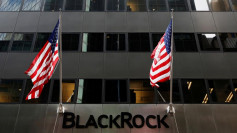SpaceX's plan to build offshore spaceports for its Starship rocket fleet pushes ahead with the acquisition of two huge oil rigs to serve as launch and landing sites for the massive rocket that will take people to Mars in the 2030s.
The acquisition by SpaceX of two deepwater oil rigs last year from bankrupt Valaris, once the world's largest offshore drilling and well drilling company, confirmed the intent to build several floating launch pads around the world.
Acquired by Space X for $3.5 million each and confirmed only this week were Valaris' ultra-deepwater semi-submersible oil rigs 8500 and 8501. Based in Houston, Texas, Valaris filed for Chapter 11 bankruptcy in August 2020 to restructure its massive debt load.
The rigs, which have been renamed Phobos and Deimos, will be converted into the company's first floating spaceports for the launch and landing of Starship/Super Heavy rockets. SpaceX eventually plans to build dozens of these offshore spaceports around to world.
Phobos and Deimos are also the names of the two Martian moons. The words Phobos and Deimos translate into "fear" and "dread."
The rigs were purchased in July 2020 by Lone Star Mineral Development registered in the name of SpaceX CFO Bret Johnsen. A month earlier, SpaceX CEO Elon Musk tweeted that SpaceX planned to build "floating, superheavy-class spaceports for Mars, moon & hypersonic travel around Earth."
The rigs will be moored off Brownsville, Texas, which is the site of the SpaceX South Texas launch site, also known as the Boca Chica launch site. This spaceport, rocket production facility and test site is located 32 km east of Brownsville on the U.S. Gulf Coast.
Boca Chica provides SpaceX "an exclusive launch site that would allow the company to accommodate its launch manifest and meet tight launch windows." It's now being used exclusively for Starship construction and flight operations.
The fully-reusable SpaceX Starship system is a super heavy-lift launch vehicle consisting of a booster stage named Super Heavy, and a second stage called "Starship" that will eventually transport up to 100 persons to Mars per trip.
At launch, Super Heavy will tote more than nine million pounds of liquid fuel. It will generate ear-splitting sonic booms when it takes-off and lands, making it necessary to move launch pads onto the ocean for the safety of nearby communities.
Musk said SpaceX plans to launch and land Starship/Super Heavy several times a day as its space transport business goes into high gear.
Starship will also serve as a hypersonic transport taking passengers from continent to continent in record time. A hypersonic Starship flight from a SpaceX spaceport off New York City to another ocean spaceport in Shanghai, China will take less than 40 minutes. It currently takes some 15 hours on a passenger jet to cover the same distance.






